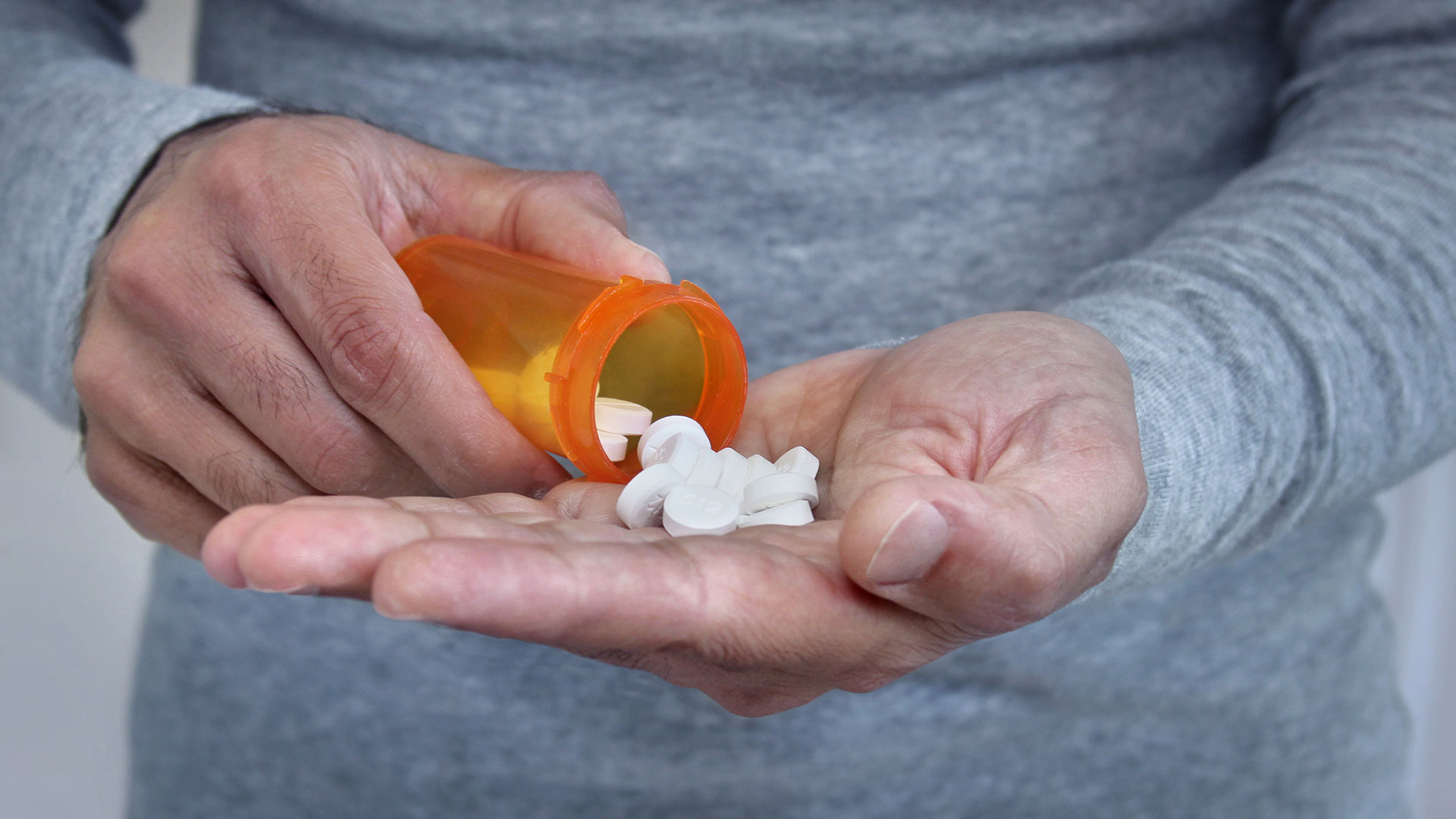04 Aug Are Prescription Drugs The Biggest Epidemic in Georgia?
Table of Content
Nowadays, Georgia currently has 262 addiction rehab facilities and 183 sober living facilities for alcoholics. The point is: this state is not a novice when it comes to drug addiction. For years Georgia has been struggling with drug addiction, and once opioids (prescription drugs synthetically or lab-created from alkaloids in the poppy seed) hit the market, they amplified the problem. The reason why there’s massive infrastructure—one that’s still expanding—related to drug addiction, is because the problem remains to be out of control.
To put in perspective, on conflicts that directly relate to underage drinking in 2013, Georgia spent $1.2 billion alone. And that’s only one facet of the addiction problem. It’s no surprise then that they’re the state which has a higher-abuse rate than anywhere else in the country. Nowadays, drugs continue to roll in, addiction is still rampant, and the repercussions of this problem are ever more serious (enter fentanyl, the silent killer 50x more powerful than heroin, but we’ll touch more on this later).
When it comes to the drugs being at play, it’s actually alcohol that’s most abused. But that’s the case in most countries/states/counties, as it’s usually the easiest and cheapest to obtain, while also being legal. Then comes marijuana and cocaine, which are often secondary or recreational drugs, meaning they’re not the primary source of addiction. While addicts will partake in the use of either drug, they’re usually not addicted exclusively to them.

But after that comes heroin—which has been a growing problem for Georgia in the last fifteen years. Not only that, but we’re seeing an entirely new type of heroin user now that opioid addictions are rampant. And they’re not as likely as you might think. The new wave of heroin addicts are typically individuals that become addicts at the hands of a legal prescription, and after losing their avenue to obtain said opioid, they find their solace in heroin because it offers the practically the same high as their opioid (they’re both derive from alkaloids in the poppy seed).
And then there are the opioid addicts that either have ways of obtaining their prescriptions legally or take to the streets for counterfeit or stolen pills. These addicts have tripled in number since the early 2000s, and continue to grow. While opioids are not the most rampant and voluminous drug in Georgia, they’re certainly among the most deadly.
When asking the question on whether or not prescription drugs are the biggest epidemic in Georgia, then the answer is certainly yes. Reason being, they’re more likely to cause overdoses, are often the gateway to heroin, and there has yet to be a correction.
What makes the prescription problem so bad in Georgia and how does it affect the state?
To understand the nature of prescription medication, we first have to look at the problem nationally. For one, in the last decade, the number of prescriptions written for opioid medication rose from 75.5 to 209.5 million. You might say, but we have a bigger population! However, the prescriptions do not correlate per capita (in terms of population growth) and have surged at a dramatically faster rate.
Nationally, the opioid addiction problem caused an estimated $78 billion in 2013 alone. But what’s particularly frightening is the demographic in which opioid use is turning over heroin addicts. Heroin—once the stomping grounds for young men in minority groups living in urban neighborhoods—is now affecting older people across all different ethnicities and geographies.
This new wave of heroin addicts called for a few studies to be done on the addiction, in which researchers found that 80% of heroin addicts reported they’d abused some form of prescription medication before their heroin addiction. Add that to the fact heroin is now cheaper, purer, and more available than it has been for the last decade (and also that the effect is quite similar to heroin) and that’s why we’re seeing another 150-200 thousand heroin addicts a year.
Not only that, but the statistics of opioid overdose in Georgia are frightening. Opioids are powerful drugs meant for pain relief that can often cause a sense of ‘euphoria’ as well. You may know them in the form of drugs like vicodin, oxycotin, percocet, methadone, and more. These are dangerous and powerful medications prescribed to patients when moderate-severe pain is present (the medications all vary in strength) and were never meant to be abused due to their potency. This is primarily why it’s such an epidemic, as it’s a lot harder to overdose on a drug like cocaine than it is to overdose on an opioid. And oxycodone sits right behind cocaine on the ‘most fatal drugs of America’ list, yet cocaine is over 5x more voluminous in illicit use. Get the picture?
But in Georgia alone, opioid overdose rates rose from .6-5.5 per 100,000 people between 1999-2014. If you want to do the simple math, shave of .1 from that .6, and divide 5.5 by it. You’ll be a bit shocked to realize that in a little over a decade, the amount of opioid related overdoses have increased by 1100%. Worst yet, this statistic doesn’t align with the general shift of opioid deaths in the nation. Meaning Georgia had it worst, with a rate much higher than the mean-rate of the entire country.
Furthermore—and here is the statistic that makes prescription overdose the epidemic of Georgia—is that in 2015, of the 1307 overdose deaths accounted for, 88% of them were due to opioids. And in the time between 1999-2013, the overdose deaths tripled in number in Georgia (with most being related to opioids). That number becomes even more frightening when in 2001 there were 152 opioid-related overdose deaths, and in 2015 there were 549.
From these bare-bone statistics, it’s pretty obvious to deduce that the problem is only worsening, and more people are dying. Now add the new types of opioids hitting the market—like fentanyl—and the death process expedites.
If you haven’t heard of a fentanyl, it’s a medication that is 50x more powerful than heroin and often prescribed to late-stage cancer patients as a remedy for their last days. Due to the nature of the medicine, the only other times it’s prescribed is in rare instances (post-surgery pain for procedures that severely invasive and for patients that have a natural resistance to opioids).

Over the last four years, Georgia has seen an increase in illicitly made (or stolen) fentanyl, and it’s amplified the opioid problem at an alarming speed. Thing is, dealers are importing it from China because it’s less expensive than heroin and packs a much larger punch in smaller sizes. It’s the more-for-less-phenomenon, and dealers are using it for economic reasons.
But they’re not selling it as is. It’s quite rare that a user will ask solely for fentanyl, as in its pure form it’s often too much for even weathered addicts. Instead, it’s more common that a dealer spreads bits of fentanyl into pre-existing drugs. They do this for the extra ‘high’ that puts their product ahead of their competition. It’s often mixed with heroin or pressed into counterfeit pills, and due to its lethal-ness, massively increases the likelihood of an overdose.
Georgia—in the recent past—has seen mass-overdose episodes amongst certain counties. One case, in particular, was linked to a batch of pills users thought were Percocet, only to tragically discover that they were composed almost solely of illicitly made fentanyl. Dozens were hospitalized and four died in the space of a couple days. This is the reality of the infiltration of fentanyl in Georgia, and one of the scarier aspects of the opioid problem.
How do other drugs compare to the opioid problem in Georgia?
While cocaine and marijuana are still vastly more popular than opioids and heroin, that doesn’t mean they’re a bigger problem. First, medical marijuana is now legal in the state of Georgia, meaning the people that need—and even those that don’t, as we all know that flexibility in that industry—can obtain it.
And on the other hand, recent studies show that patients which need treating for drugs like marijuana and cocaine (which are significantly lower in addiction than other drugs) have actually been on the decline since 2010. Meth has risen a bit, and heroin has risen as well (but this is tied into the opioid epidemic as well—as often opioid addicts will switch over to heroin because it offers the relatively same high and can be a lot cheaper).
When you take a look at the statistics at the end of the 20th century in Atlanta, Georgia, you’ll find that it was crack cocaine (what the government calls ‘smoked cocaine’) and cocaine that were the biggest proponents in drug addiction. In fact, there was indeed little comparison between a number of treated patients for cocaine versus heroin. Meth was down there too (and continues to be) along with drugs that are rarely found to be the driving force of addiction (ecstasy and hallucinogens).
In fact, nowadays, when you’re doing research on the subject, you’ll rarely see any talk of any drugs outside of heroin or opioids. While they still drive traffic, increase crime, and create problems for the state of Georgia, they’re not what’s being talked about because, well, to be frank, they’re not killing people in the same way opioid addiction is.
But part of solving the opioid problem will help the distribution and presence of the other drugs as well, being that addicts often partake in these ‘secondary drugs’ but are usually not addicted exclusively to them.
The other highly addictive drug, methamphetamine, doesn’t have as big of a presence in Georgia as it does in some states. In fact, if you go north of Georgia and more towards Tennessee, Kentucky, and Indiana, the amount of meth per capita increases over 1000%.
Thus it’s quite clear that in the state of Georgia, opioids are the problem. This indeed makes them the biggest epidemic in Georgia and a problem that needs solving… especially with the shifts occurring within the immediate drug market.
How does it affect Georgia?
Aside from addiction rates rising, fatalities due to overdose (and now from ‘fake’ opioids which contain fentanyl that pays more similarities to a poison than a drug), and increased drug trafficking, they affect the infrastructure of the state.
Every state has a certain cap of money set aside for healthcare—which covers every facet of the field. When there’s a certain area that needs assistance, more money is funneled into tackling the problem, which exposes other segments of Georgia’s healthcare that might need help too.
When you take into account that Georgia spent $78 million dollars in 2013 on the opioid problem alone, one that has doubled if not tripled since that time (we won’t know until data comes in, as statistics are often latent), then we’re talking about huge expenses. A number of treatment facilities and inpatient living homes trump all the surrounding states, and many of them are government-supported, especially with CARA in motion.
Oddly enough, despite the fact that opioid addiction is on the rise in Georgia, crime is much lower than previous years, with the entire index at nearly half the size than a decade ago. There’s a lot of gang violence that occurs in the state, but if it’s linked to the sale and distribution of heroin and opioids, then we haven’t seen a direct correlation between the two as the opioid epidemic continues to grow.
However, all said and done, the problem needs to be addressed and mitigated. The epidemic has reached a point where it is now inviting new lethal substances into the state, and they’re being passed around like candy. More and more money continues to be spent on the growing problem, and the addiction rates continue to spike. Whether it’s indicative of the flaws in the medical system, the government programs, or the sheer offense against the war on drugs as a whole, something needs to change. And the first step is to raise enough awareness that Georgia can receive nationwide support.
Sources:
Willough, Mariano. “This Map Tells You Where Georgians are Dying of Drug Overdoses.” AJC. 2 June 2016. 11 Mar. 2019. https://www.ajc.com/blog/investigations/this-map-tells-you-where-georgians-are-dying-drug-overdoses/mhXbkvxj5XMRajmkEembcI/
Regan, Tom. “Meth, Cocaine Are the Most Commonly Seized Drugs in Georgia this Year.” WSB-TV Atlanta 2. 16 Jul. 2018. 11 Mar. 2019. https://www.wsbtv.com/news/local/the-georgia-counties-with-highest-opioid-use-are-in-metro-atlanta/791213508
Strasser, Sheryl. “The State of Prescription Drug Use in Georgia: A Needs Assessment.” Georgia State University. 2012. 11 Mar. 2019. https://stoprxabuseinga.org/wp-content/uploads/2016/06/2012-Rx-Drug-Abuse-Final-Needs-Assessment.pdf



 678-771-6411
678-771-6411


No Comments